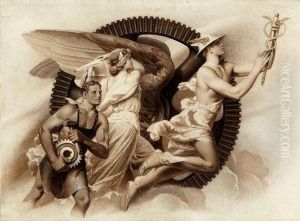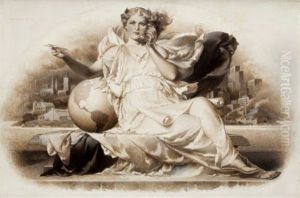Alonzo Earl Foringer Paintings
Alonzo Earl Foringer was an American artist, best known for his illustrative work during the early part of the 20th century. Born on September 13, 1878, in the small town of Freeport, Pennsylvania, he grew up in a country setting that would later influence some of his artistic themes.
Foringer showed an early interest in art and was encouraged to develop his talents. He eventually pursued formal art studies, which led him to enroll at the Pennsylvania Academy of the Fine Arts in Philadelphia. He studied under prominent artists such as Thomas Anshutz and William Merritt Chase, who were influential figures in American art education at the time.
After his education, Foringer worked as an illustrator, contributing to various publications and gaining recognition for his detailed and expressive style. His career as an illustrator coincided with the golden age of illustration in America, a period when illustrators were highly regarded and their work was widely disseminated through magazines, books, and advertisements.
Perhaps Foringer's most famous work is 'The Greatest Mother in the World,' a Red Cross poster he created during World War I. This iconic image features a female figure, representing the Red Cross, cradling a wounded soldier. It became one of the most memorable images of the era and helped raise significant funds for the war effort through the sale of war bonds and the promotion of humanitarian aid.
Foringer's work extended beyond illustration, as he also engaged in fine arts, including painting and drawing. He exhibited his artwork in various venues and was recognized by his peers for his contributions to the field.
Despite his success as an artist, Foringer's name is not as well known today as some of his contemporaries. Nonetheless, his contributions to American art, particularly through his work as an illustrator, remain an important part of the nation's artistic heritage. Alonzo Earl Foringer passed away on December 22, 1948, leaving behind a legacy that continues to be appreciated by art historians and collectors.

